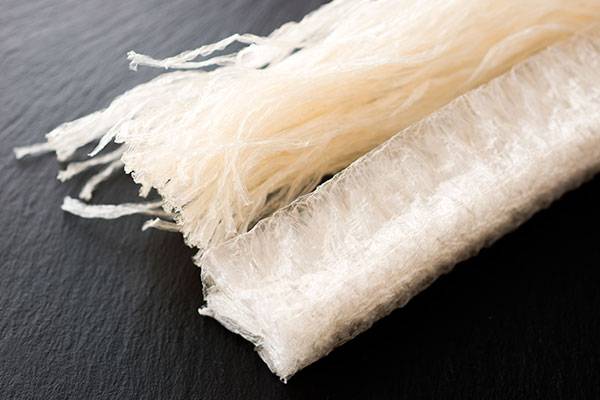Vegetable gelatine: how to make gelatine with agar-agar
Do you know how to make vegetable jelly with agar agar? We tell you how to use this seaweed as a natural gelling agent to make desserts and vegan dishes.

Neutral gelatine is a substance mainly used in confectionery to give consistency to desserts. There are two types of gelatine, animal and vegetable. Animal gelatine has traditionally been used in Western cuisine. It comes from the collagen in the bones and cartilage of animals when they are cooked and is very nutritious, as it is 90% protein. This type is still the most used today, but due to the increasing amount of people who do not consume animal products, vegetable gelatine is increasingly being used.
Vegetable gelatine, also known as agar-agar, is obtained mainly from red algae, making it suitable for vegetarians and vegans. The best thing about agar-agar is its versatility. It does not add colour, smell or flavour. It just modifies the texture. The origin of agar-agar is Japanese, and it was discovered in the 17th century. In Japan, it is called 'kanten' or 'food of gods'. The word agar-agar is Malaysian in origin, as it was Malaysia that adopted the product for commercial purposes and distributed it in the West.
Where can you buy agar-agar? In the supermarket, oriental food stores, nutrition stores and herbalists, and you can find it in the form of powder or fibres. Preparing this vegetable gelatine at home is very simple and you can do this in just a few minutes.
Vegetable gelatine, also known as agar-agar, is obtained mainly from red algae, making it suitable for vegetarians and vegans

How to use agar-agar to make vegetable gelatine
To prepare vegetable gelatine with agar-agar we recommend buying it as a powder in order to have better control over the amount you use. Making vegan gelatine is very simple, just follow these steps:
1. Add the agar-agar to the liquid which you wantto thicken. Always add the liquid cold.
2. Bring to a gentle boil for two minutes, stirring constantly to avoid lumps.
3. Let it cool.
One of the easiest recipes to prepare at home is a natural fruit jelly. Dissolve the recommended amount of agar-agar in one litre of fruit juice, heat and bring to the boil for two minutes. Leave to cool at room temperature and pour into a mould, and then put it in the fridge until it is set. You can also add natural fruit cut into pieces.
How much agar-agar should be used to make gelatine?
The amount will depend on the result you want to achieve. The more agar-agar you add to the liquid, the thicker the mixture will be. For a soft gelatine, add 4 grams of agar-agar powder per litre. But if you want a more solid texture, add up to 10 grams per litre.
Agar-agar is not only used as a vegetable gelatine, it is also used as a thickener. If less of the seaweed is used, you can use it to thicken a stew, custard, cream, ice cream or sauce. If you want to use agar-agar as a thickener, then it should not boil, you simply have to put the liquid you want to thicken on minimum heat and dissolve the amount indicated in the recipe. Agar-agar can also be eaten as an additional ingredient in salads to take advantage of all its properties. In Japan, a tablespoon of agar is added to soup, cups of tea or rice.
What do you think about?
Share comments, opinions and tricks with the Community







